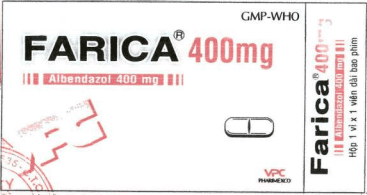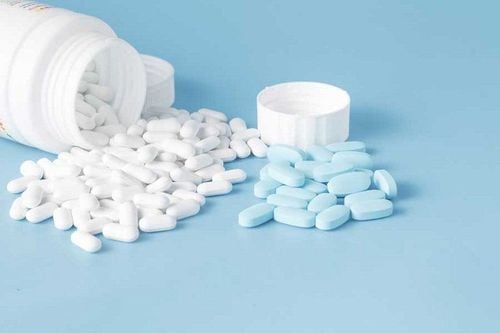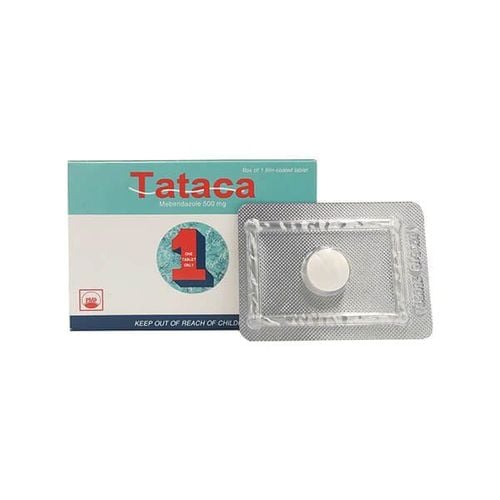This is an automatically translated article.
Many mothers are forced to take medication while breastfeeding. Almost all drugs pass into breast milk and this may pose a risk to a breastfed infant. Accordingly, it is necessary to consider factors such as drug dosage in lactating women, pharmacokinetics and effects of the drug on the neonate in order to have an appropriate drug selection, while ensuring treatment effectiveness. to the mother, while ensuring the elimination of the drug into breast milk is safe for the infant.1. How does the drug pass through breast milk?
The route of drug elimination into breast milk is influenced by protein binding, lipid solubility, and ionization of the drug used.Nearly all drugs are excreted in breast milk to some extent. Notable exceptions are heparin and insulin, which are too large to cross the biological barrier into breast milk.
Drug transfer from mother's plasma to milk is by passive diffusion across biological membranes. The characteristics that play the greatest role in drug elimination in human milk are the low binding to maternal plasma proteins and high lipid solubility. In addition, since milk is slightly more acidic than plasma (pH of milk is about 7.2 and plasma is 7.4), this condition will allow weakly basic drugs to migrate more easily. into breast milk and is retained after ionization. In addition, milk composition changes during and between feedings; This may also affect the excretion of the drug into breast milk. For example, milk at the end of a baby's meal often contains significantly more fat than foremilk and can concentrate fat-soluble drugs.

Gần như tất cả các loại thuốc đều đào thải vào sữa mẹ ở một mức độ nào đó
2. How to calculate the infant's exposure to the mother's medication
Calculation of infant exposure to maternally circulating drugs may be performed to help guide the safe use of drugs in nursing women.The formula for calculating the dose received into the infant's body through breast milk is the product of the drug concentration in the mother's plasma, the milk-to-plasma ratio over time, and the volume of milk ingested by the infant.
Normally, infant milk intake is usually estimated to be 0.15L/kg/day. The infant dose (mg/kg) can then be expressed as a percentage of the maternal dose (mg/kg). Cut-offs below 10% have been approved as a guideline for the safe use of drugs during lactation.
Based on that, drugs such as lithium (infant dose as high as 80% of weight-adjusted maternal dose) and amiodarone (infant dose up to 50%) should be avoided by the neonate. exposure and potentially significant toxicity. For drugs with greater inherent toxicity such as cytotoxic agents, ergotamine, gold salts, immunosuppressants and isotretinoin, the 10% cutoff is again considered too high and is considered contraindicated. determined during lactation.
As a rule of thumb, the mother's use of topical preparations such as topical creams, nasal sprays or inhalers poses less risk to the breastfed infant than conventional systemic medications. often. This is due to lower concentrations of the drug entering the maternal circulation and therefore lower levels of the drug in breast milk. However, the risk to the neonate must be considered in relation to the toxicity of the drug used, the dosage regimen and the area of application.
In addition, other factors to consider when using the drug in nursing women is the pharmacokinetics of the drug in the infant's body. In general, drugs that are poorly absorbed or have high first-pass metabolism are less likely to cause problems during lactation. For example, gentamicin is very hydrophilic and very poorly absorbed when taken orally, so it is unlikely to be excreted in breast milk, which is the route of elimination of lipophilic drugs.
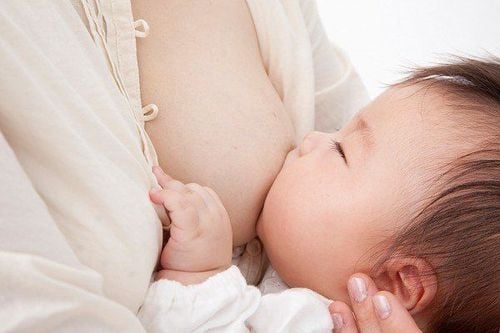
Việc tính toán mức độ phơi nhiễm của trẻ sơ sinh đối với thuốc lưu hành trong cơ thể mẹ có thể được thực hiện để giúp hướng dẫn sử dụng an toàn thuốc ở phụ nữ đang cho con bú
3. How to reduce the risk of exposure for breastfed babies
The overall risk of the drug to the nursing infant depends on the concentration of the drug in the infant's blood and the effect of the drug on the infant. If, after assessing the risks and benefits, it is decided to breastfeed while the mother is taking the drug, the infant should be monitored for adverse effects such as failure to develop normally, irritability, and sedation. However, it is difficult to identify adverse reactions occurring in neonates. Therefore, feeding immediately prior to administration of the drug is considered as a way to help minimize infant exposure as concentrations in milk may be lowest towards the end of the dosing interval. However, for some drugs, milk concentrations are lower than plasma concentrations.For drugs with neonatal doses greater than the 10% cut-off, maternal dose should be adjusted for weight to contribute to reduced infant exposure. At the same time, babies can also be breastfed and formula fed alternately.
For drugs that have been considered hazardous, the baby needs to be replaced with exclusive formula during the mother's treatment. At this point, the mother should be encouraged to continue expressing breast milk during treatment but to express the milk. This will help maintain the ability of the mammary glands to produce milk and help the mother to continue breastfeeding after the treatment is over.
4. Evaluation of the safety of some commonly used drugs during lactation
Pain relievers Pain relievers such as paracetamol, ibuprofen, naproxen and codeine are considered safe during breastfeeding, due to the low pass into breast milk and the low incidence of adverse effects on the infant.However, the use of aspirin, even though the drug passes into breast milk has a low threshold, is best avoided due to the theoretical risk of causing Reye's syndrome in the infant. Sumatriptan has a short half-life of about two hours, and infant exposure can almost entirely be avoided by expressing and discarding breast milk for about eight hours after administration. Morphine is generally considered safe because of the low amount passed into milk and the high first pass metabolism.
Dewormers There do not appear to be any data on the elimination of anthelmintics such as mebendazole or pyrantel into breast milk although these agents are generally considered safe due to poor gastrointestinal absorption. .
Antibiotics Antibiotics such as penicillins, cephalosporins and macrolides are suitable groups in lactating women. However, there is a small theoretical risk of altering the infant's gut microbiota and causing allergic sensitization.
The safety of metronidazole is controversial due to the high possibility of the drug passing into breast milk.
Elimination in breast milk for tetracyclines is low but they are generally avoided because of the possible risk of inhibiting bone growth or causing tooth discoloration in infants.
The anticoagulant Heparin (unfractionated and low molecular weight) is considered safe because these agents have a large molecular weight and do not pass into breast milk to a significant extent.
Warfarin is also taken while breastfeeding because the possibility of altering prothrombin time has not been detected in breastfed infants. However, caution should still be exercised when monitoring the infant's prothrombin time during maternal treatment.
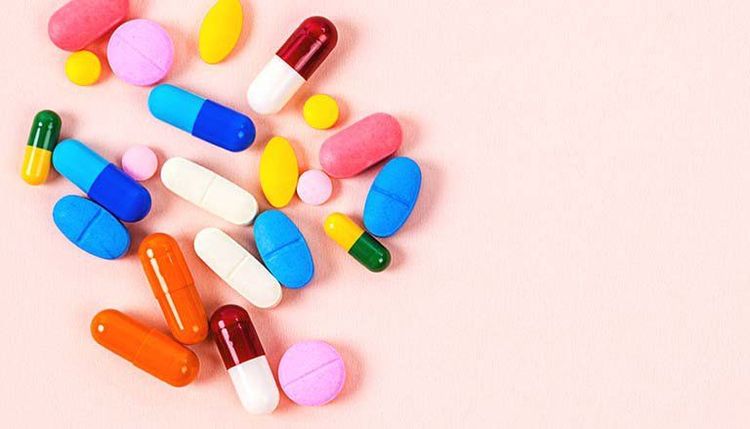
Các loại thuốc chống đông máu như Heparin và Wafarin được coi là an toàn với phụ nữ đang cho con bú
Antidepressants Selective serotonin reuptake inhibitors (SSRIs) are excreted in human milk to varying degrees.
While paroxetine has been reported to have the lowest excretion in breast milk (weight-adjusted infant dose 1-3%), fluoxetine is to a greater extent (14%) and its active metabolite. Its active ingredient, norfluoxetine, has a half-life of one to two weeks and can accumulate in breastfed infants.
Antihistamines Antihistamines such as promethazine, dexchlorpheniramine and diphenhydramine are considered safe if taken while breastfeeding.
However, caution should be exercised when monitoring infant sedation or discomfort.
Benzodiazepine Benzodiazepines with short plasma half-lives, such as midazolam and temazepam, are unlikely to be harmful to the infant due to low amounts passed into breast milk.
In contrast, agents with long half-lives such as diazepam can accumulate in the infant's body with prolonged exposure and can cause the infant to fall into a coma or stop nursing.
Decongestants A short course of pseudoephedrine (weight-adjusted dose <4%) is considered safe for nursing infants.
However, topical decongestant sprays or drops are often preferred due to lower potential for infant exposure.
Stimulants and Addictions These drugs are not conclusive because of the lack of consistency in dosage and uncontrolled use. In addition, most have relatively high doses for infants. Exposure to infants after maternal ethanol intake can be as high as 20% and is associated with psychomotor development. For this reason, drinking alcohol should be minimized while breastfeeding (eg, stopping breastfeeding for about two hours after drinking alcohol).
Caffeine exposure can be as high as 34% of the weight-adjusted maternal dose and adverse effects such as restlessness and irritability have been reported in infants exposed to breast milk.
Nicotine has been detected in the plasma of breastfed infants and it is best for nursing mothers to avoid smoking. The use of nicotine replacement therapy in nursing mothers should also be weighed against the risks and benefits. As a general rule, however, short-term use of nicotine replacement therapy is much preferable to continued smoking.

Nicotine đã được phát hiện trong huyết tương của trẻ sơ sinh bú sữa mẹ và tốt nhất là các bà mẹ đang cho con bú nên tránh hút thuốc
If you have any questions about how the drug owner passes through breast milk and need advice from a doctor, you can leave your question in the ASK DOCTOR VINMEC section directly on the hospital website. Your question will be sent to the doctor and you will receive a consultation as soon as possible!
Please dial HOTLINE for more information or register for an appointment HERE. Download MyVinmec app to make appointments faster and to manage your bookings easily.






